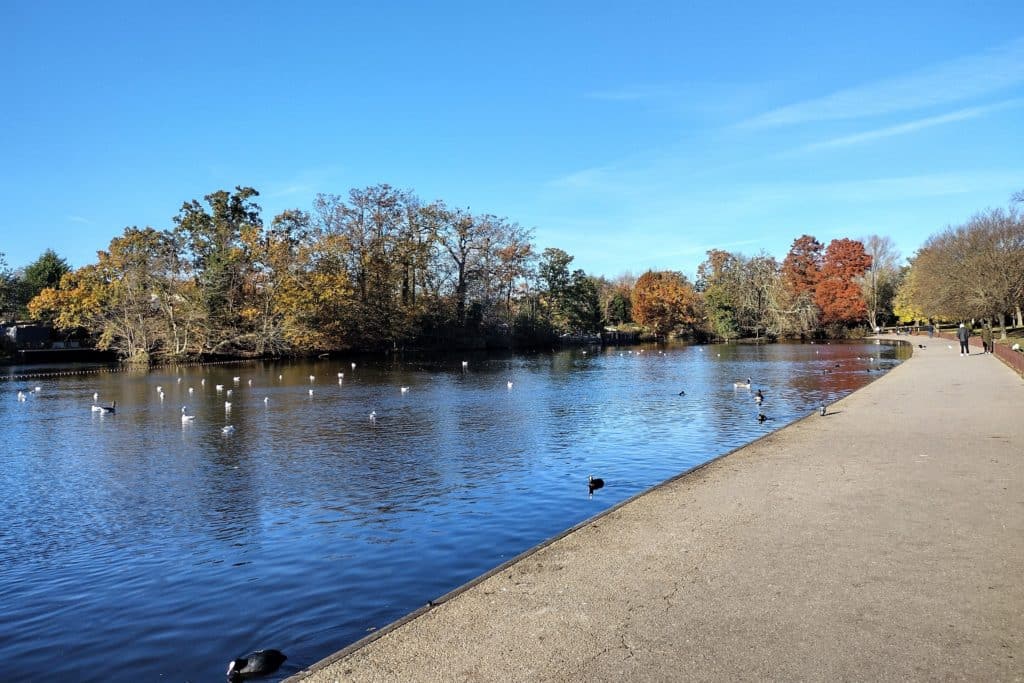
To complement this month’s feature on our successful London Day of Nature event held in October, we’re also excited to reflect on the highlights of the 36th issue of The GiGLer in this Winter editorial. As the colder weather settles in, it’s the perfect time to look back on the articles that ushered us into the season and anticipate what lies ahead for GiGL and Issue 37 of our newsletter.
This issue has been particularly unique, with its narratives weaving themes of history, community, and – rather unintentionally – a remarkable number of pond-related articles! I’ll take you through them all, highlighting where you can learn more and how to get involved in specific projects.
Let’s start with August’s edition, where Citizen Zoo shared their exciting news about exploring the potential return of majestic white storks to London. Digby Wheeler, a familiar face to GiGL as an ex-data assistant turned Citizen Zoo Urban Rewilding Officer, discussed the significance of white storks and the scope to establish them to the city, following the successes in Surrey. Since the article, they’ve held their first White Stork Working Group webinar, inviting participants from a range of organisations to learn about the project’s aims, the wider White Stork Project, and to provide feedback.
The White Stork Recording Form, created by GiGL, is now live, enabling anyone to submit sightings of these distinctive birds and support the project’s evidence gathering. In the coming months, we’ll work closely with Citizen Zoo to offer data-related advice and services for their investigations.
Accompanying Citizen Zoo’s article, we also featured a positive story from a site in Newham. What was once a disused laundry yard is now a thriving community garden named The Up Garden. In one of London’s least ‘green’ boroughs of Newham, The Up Garden provides a haven within the urban landscape, showing that wherever there is spirit and enthusiasm, nature can thrive. This labour of love (driven by Suzanne Hu and local community members), was deservedly recognised in 2023 with the RHS and BBC’s Growing Together Award. This site is available to discover on GiGL’s Spaces to Visit interactive map.
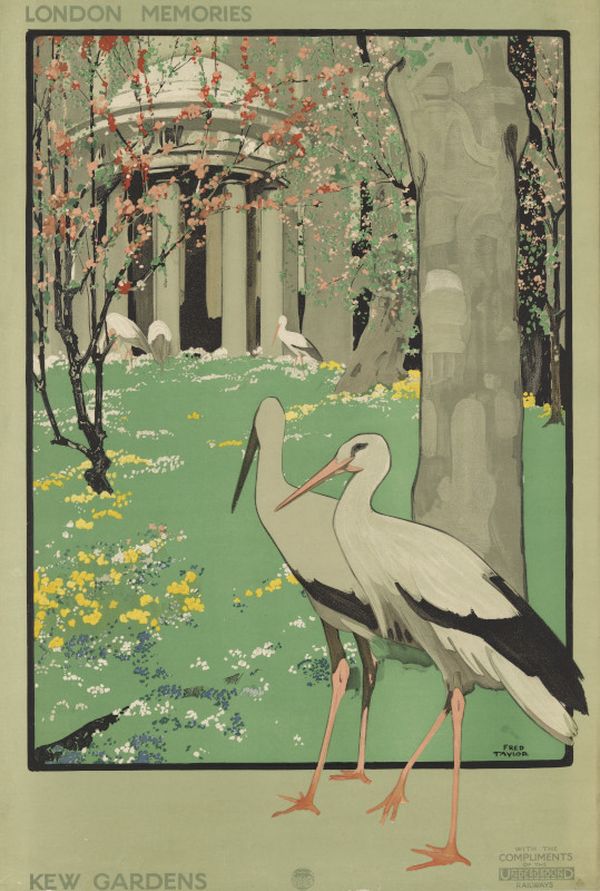

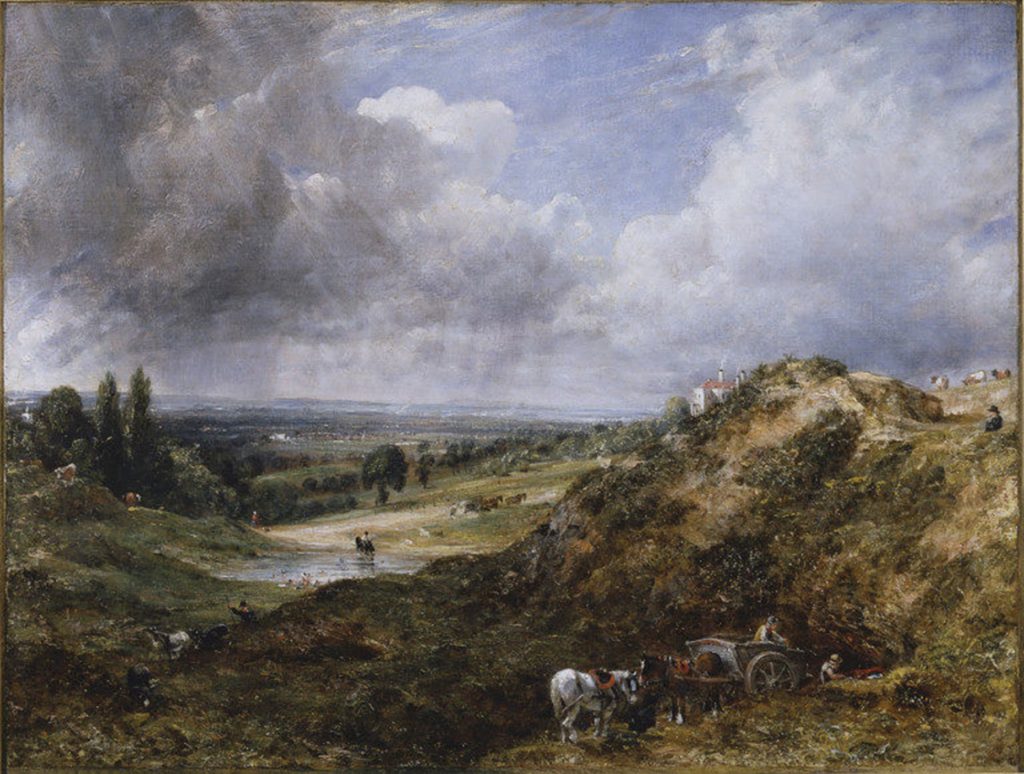
Our September edition brought us the first of many pond articles. The London Geodiversity Partnership (LGP) focused on a Hampstead Heath relic – John Constable’s Branch Hill Pond. A pond preserved in a painting but that had disappeared in modern times, this site was in need of some caring regeneration. The collaborative effort to reinstate Branch Hill Pond was initiated by the local Redington Frognal Association, with significant support from the City of London Corporation, which owns and manages Hampstead Heath.
Since that article and their introduction back in Issue 35, the LGP went on to hold their annual Geoconservation Day at Riddlesdown Quarry. You can read more about the event here and get in touch with them if you would like to get involved in future trips: fieldtrips@geologistsassociation.org.uk.
Staying with the theme of history, our Ancient Woodland Inventory (AWI) volunteer Stephen delved into narratives from the London Ecology Unit Handbooks in October’s article. Stephen investigated these handbooks as part of the AWI Update project to uncover evidence of ancient woodlands and their names. The handbooks were written from the mid-1980s to early 2000s to explore habitats and biodiversity in various boroughs, but they also included compelling snapshots of life in bygone eras. If you’d like to hear more about highway robberies, ‘tumbling’, parachuting in pleasure gardens, and stolen identities – then this article is for you!
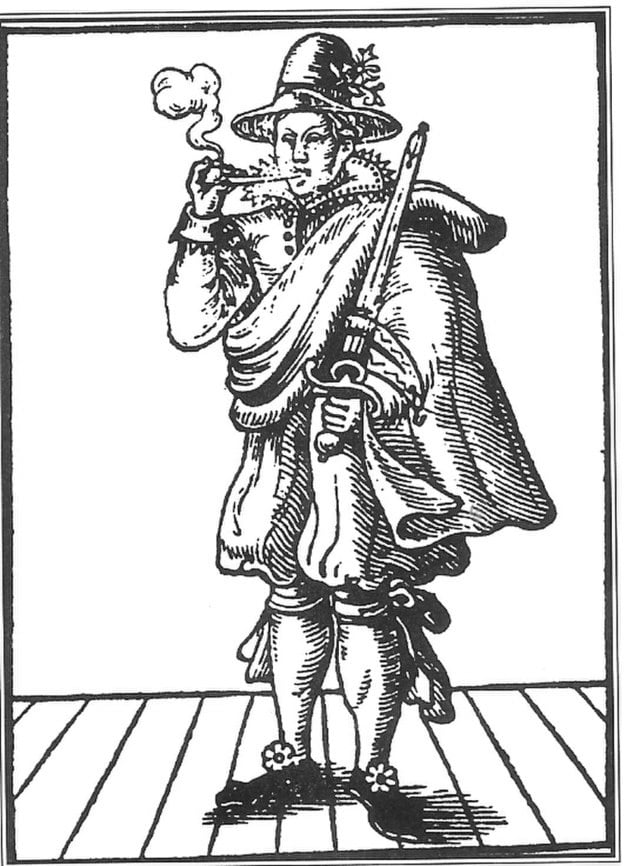
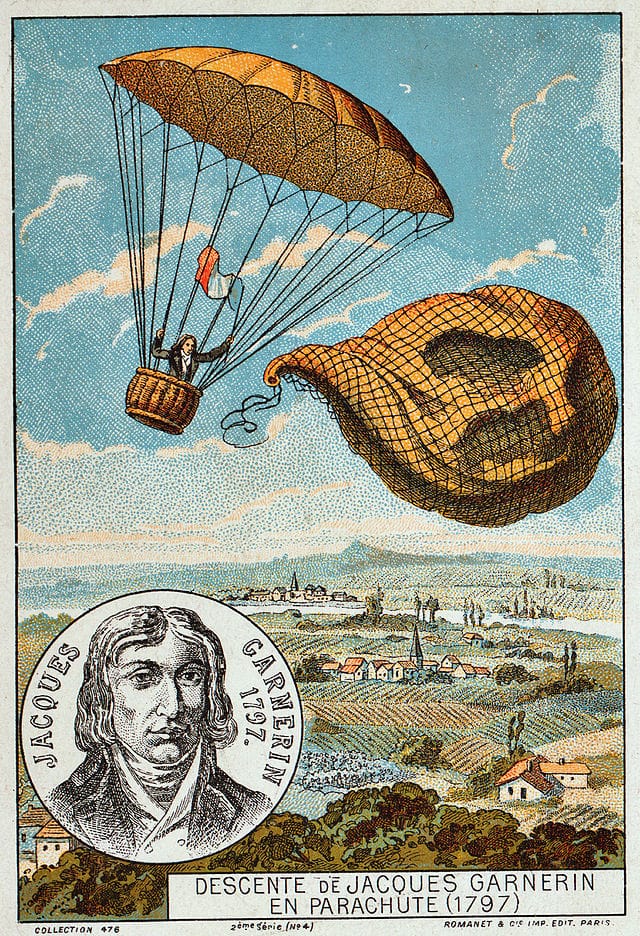
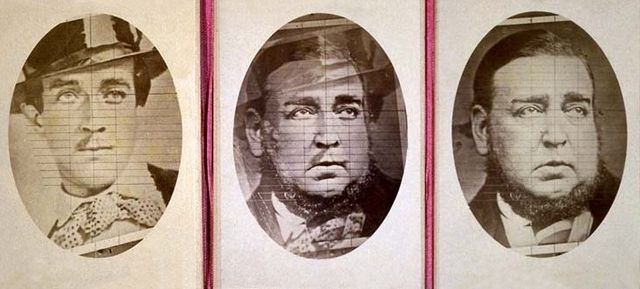
Left: A representation of highwaywoman Moll Cutpurse. Middle: A collecting card of ballooning events, featuring Jacques Garnerin. Right: A group of photographs designed to see if the claimant, Arthur Orton, could be likened to Sir Rodger Tichborne. Wikipedia Commons
In October, we were also back to business with a Biodiversity Net Gain (BNG) article, a topic many of our readers have been interested to hear about in recent years due to the challenging nature of the subject. We took a different approach in this article by showing how we came to the decision not to pursue a service aspect of BNG. Strategic significance is the local significance of a habitat based on its location and habitat type. We were planning to offer a service to investigate and map strategic significance for London, but due to the impending Local Nature Recovery Strategy and the varying approaches of Local Authorities in their own strategies and policies, it was not sensible for us to continue. Despite this, we gained valuable insights from our investigation to be able to assist stakeholders. This article from Eleni Foui, our Senior Partnership Officer (Planning), gives a great overview of this process.
November saw our second pond-focused article, this time written by Elizabeth at the Zoological Society of London (ZSL), about The Great London Pond Project. Along with GiGL and the Freshwater Habitats Trust, and supported by the Mayor of London, the project began in 2024 by mapping London ponds and bringing volunteers together to survey and identify priority ponds once trained. Now at its mid-point, with a baseline established, the next phase is to partnership with a network of landowners and community groups to restore the priorities identified.
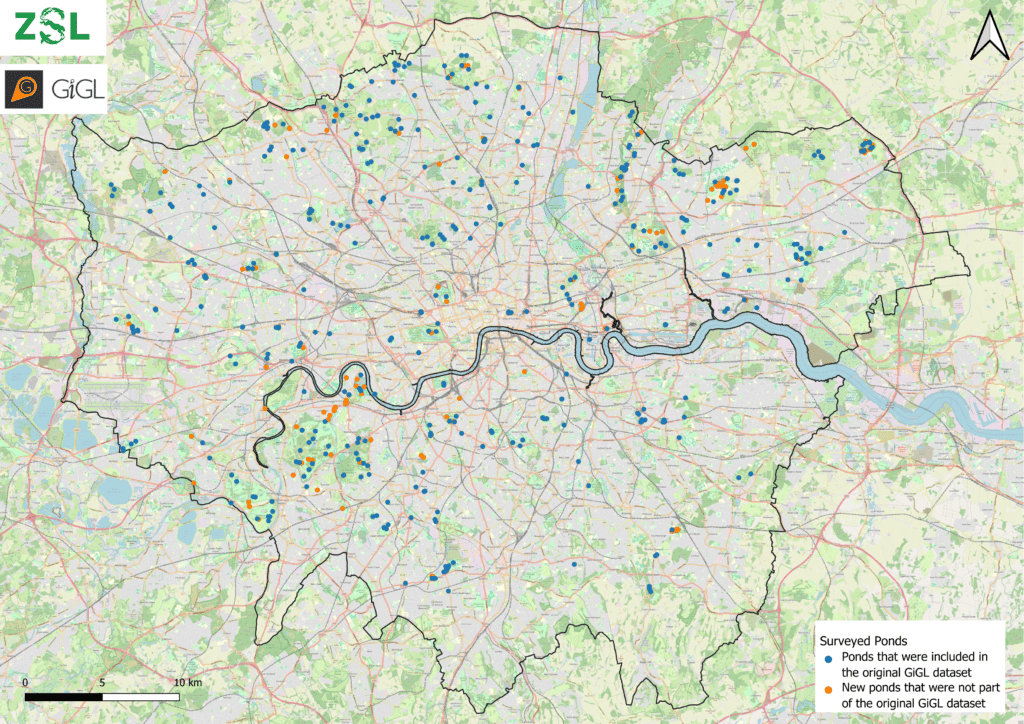
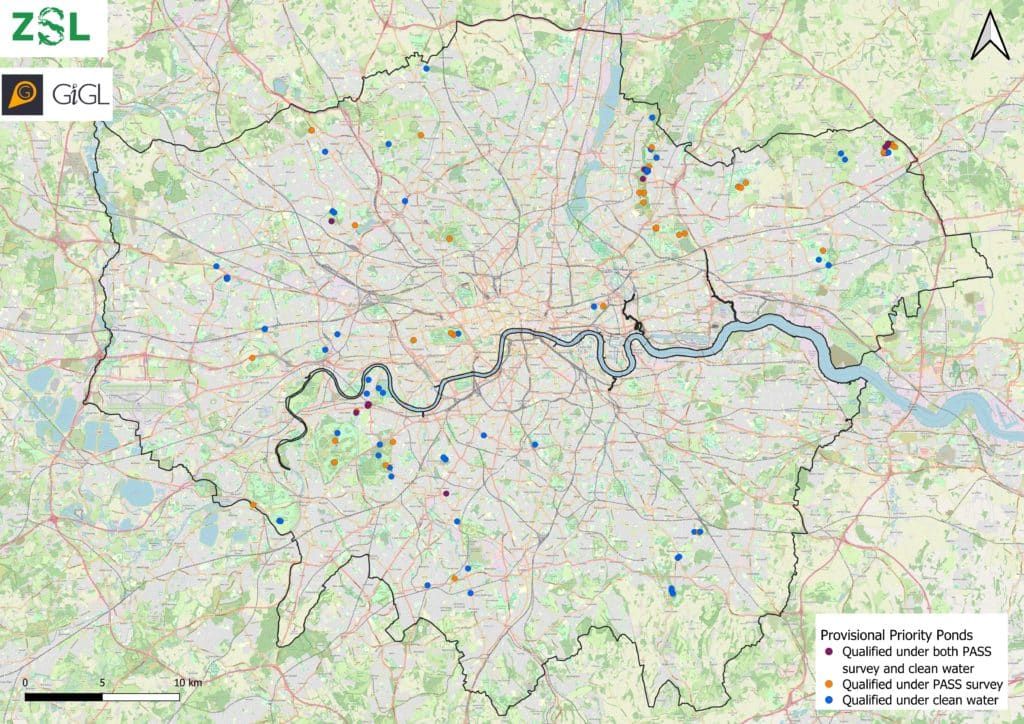
Left: map of ponds surveyed as part of The Great London Pond Project. Right: map of Provisional Priority Ponds identified.
Our final pond article focused on another type of survey – searching for newts! Alex from Ealing Wildlife Group shared the process and rewarding species discoveries from newt bottle trapping and torch surveys at Paradise Fields. With the introduction of beavers to the area, it will be fascinating to monitor how these changes affect local species and the environment. Such surveys will be crucial, especially if future introductions are on the horizon elsewhere.
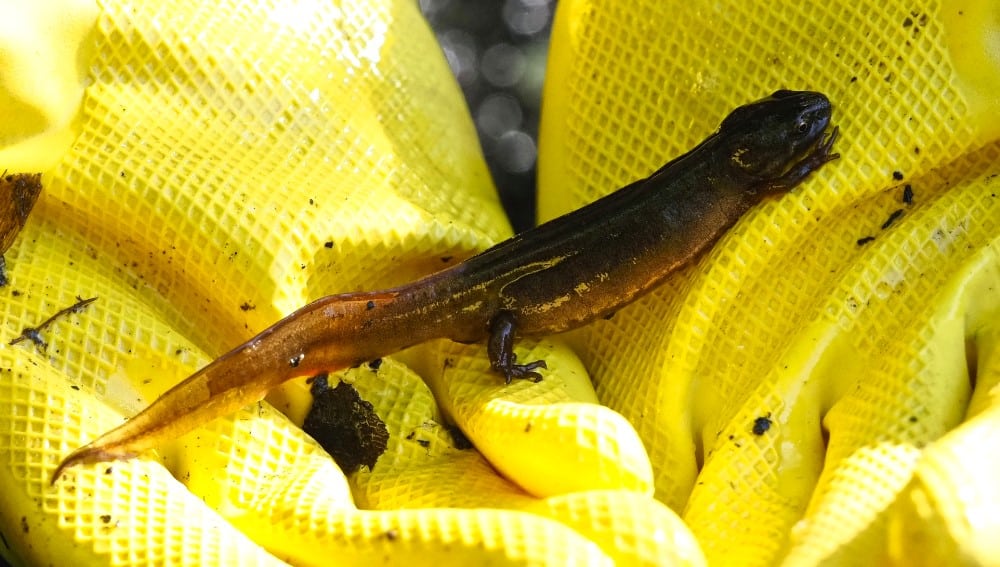
Over the last six months, the team have been hard at work with the Greater London Authority to progress London’s Local Nature Recovery Strategy (LNRS). In my previous editorial, I mentioned the addition of two new team members to GiGL: Emily Hawkes, Nature Recovery Data Officer, and Clara Lehmann, Nature Recovery Data Assistant. In Issue 36, they shared their staff interview articles to continue our trend of introducing staff to our GiGLer audience. Read their articles linked above to gain insights into their passions, experiences, and roles within GiGL.
This means we can finally complete our GiGL team tree with all our faces! See an overview of our team below, and visit our contacts page if you need to reach out to a specific member.
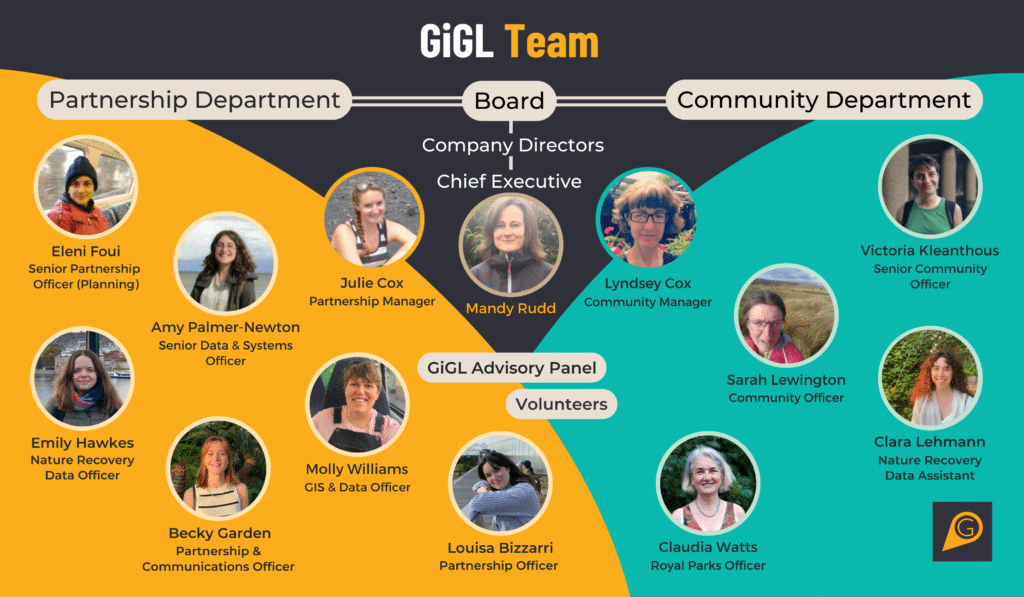
Finally, let’s look ahead to what we can expect from articles in Issue 37. We are set to complete our staff interview series with Claudia’s article. With years of ecological knowledge and experience working in various settings, mainly The Royal Parks and GiGL, Claudia’s article promises to be full of captivating stories. You can also expect to see updates on the progress of the Local Nature Recovery Strategy, as it enters important consultation stages in the coming months – look out for briefs or full articles on this. We’ll see the London Day of Nature Part 2 recap next month, and have more community contributions along the way, including an introduction to a new London photography and explorer acquaintance of GiGL’s, Guiseppe Intrieri.
So, stay tuned, keep in touch, and as ever, thank you for being a valued GiGLer subscriber and a part of the GiGL community.
